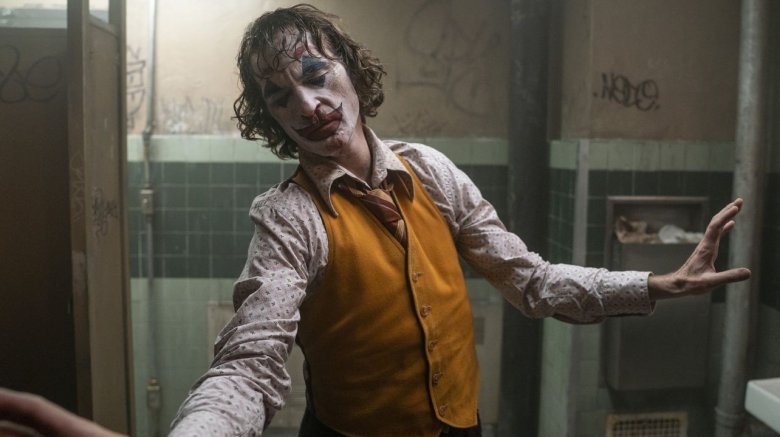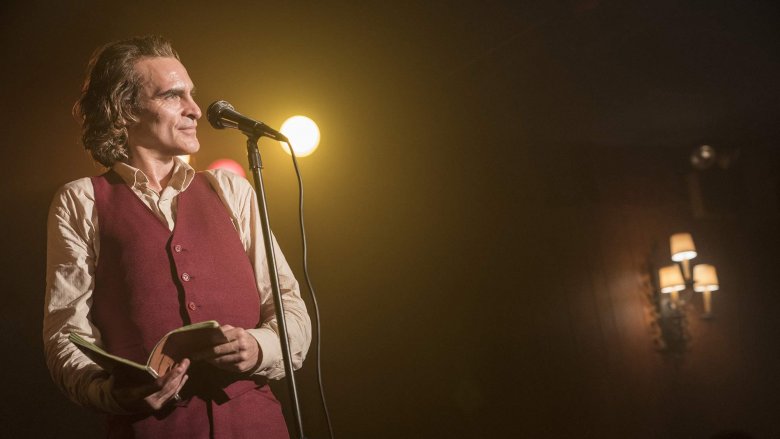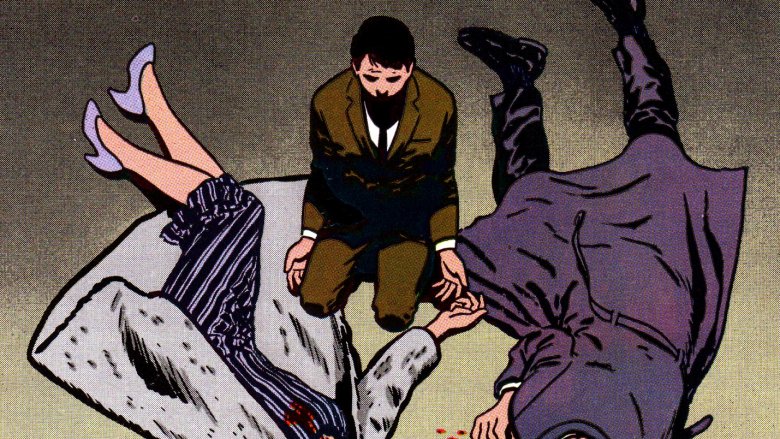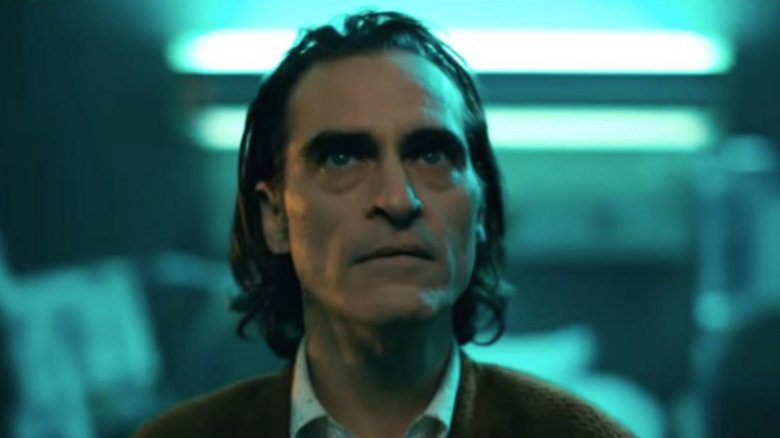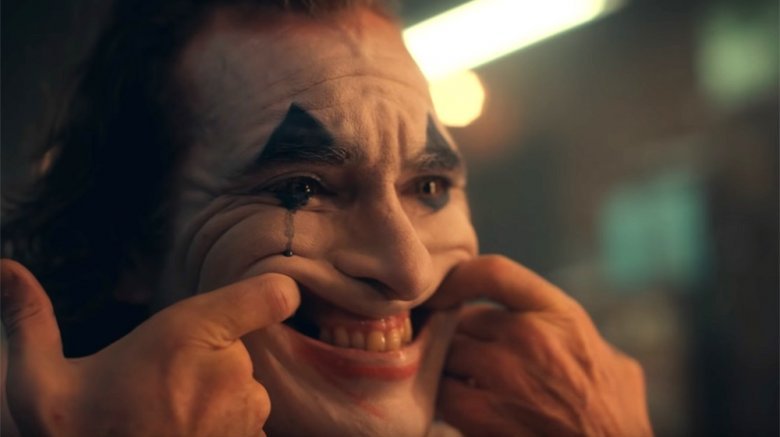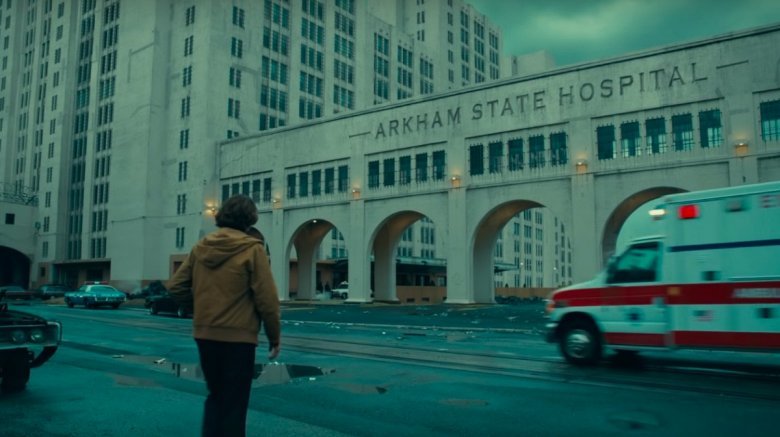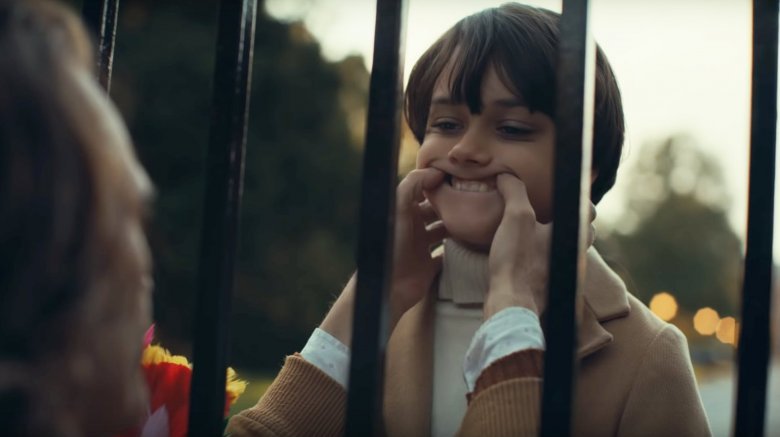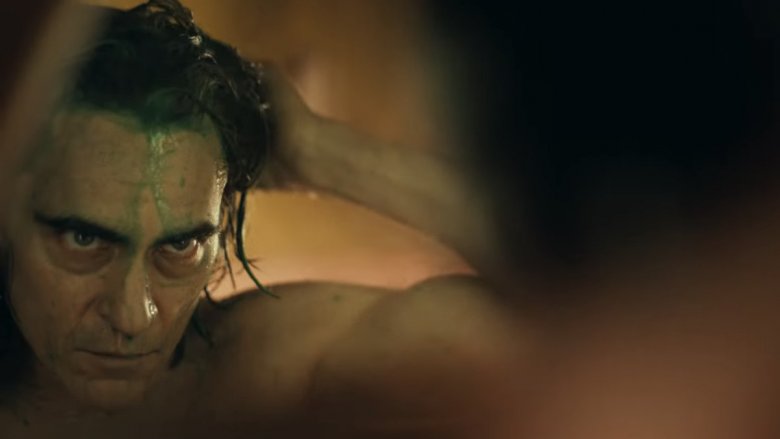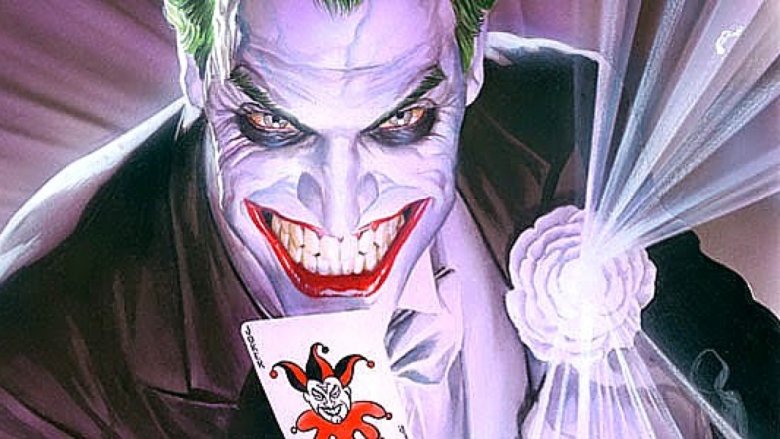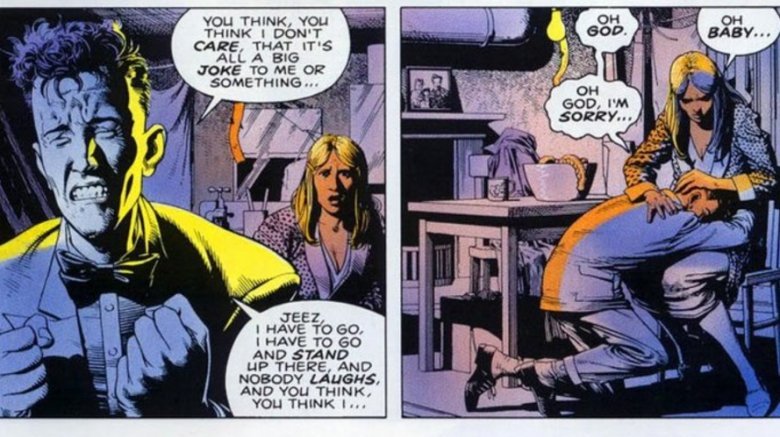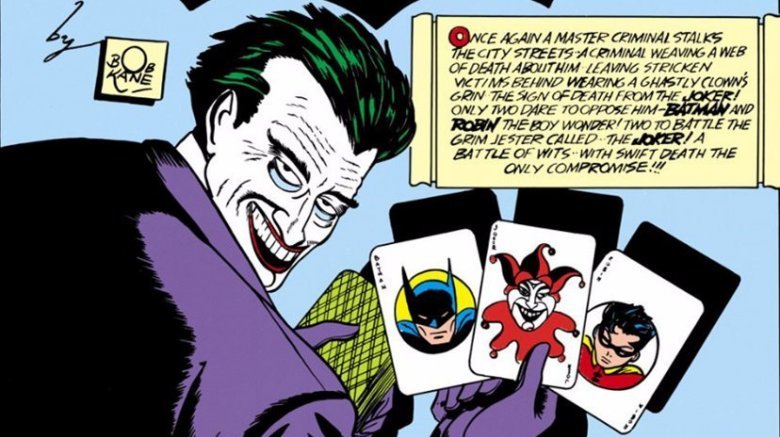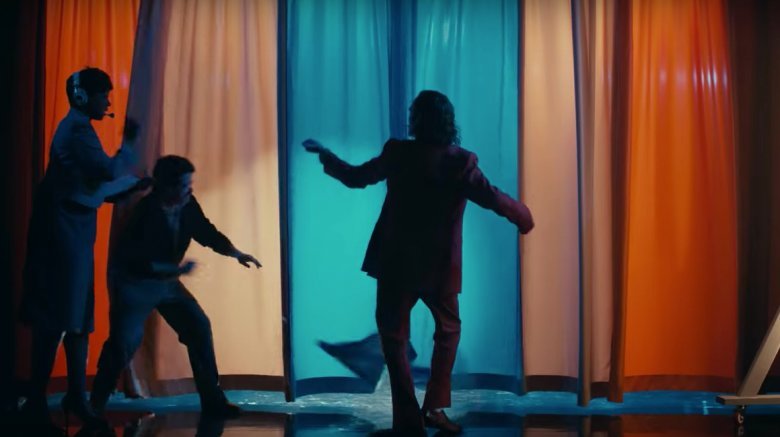How Joker Is Completely Different From The Comics
Director Todd Philips has been clear it was never his intention to adapt any specific comic when he directed Joker, and now that we can all see the film for ourselves, it's clear that he meant it. In both its plot and its themes, Joker has more in common with 1976's Taxi Driver and 1982's The King of Comedy than any DC or Marvel comic book movie.
Still, whether Philips intends it or not, Joker is at least partly a child of the comics. The film is set in Gotham City, the Wayne family is in full attendance (even their butler shows up), and the subject of Joker is one of the most popular comic book bad guys of the last century. Not to mention Joker ends with one more portrayal of the murder scene that finds the young Bruce Wayne left an orphan in an alley.
Regardless, Joker diverges sharply from the source material, even from the few comics which gave the Clown Prince of Crime some semblance of an origin story. Here are some of the biggest ways Joker is different from the comics.
In DC comics, we know at least that Joker exists
Throughout Joker, it's clear Arthur Fleck lives in a world of fantasy. As he's watching a late night talk show with his mother, Arthur imagines himself in the audience of the show, eventually being called up to the stage by host Murray Franklin (Robert De Niro). Perhaps the most crushing discovery is that the relationship Arthur imagines he has with Sophie (Zazie Beetz) is completely imaginary. The real Sophie barely remembers his name.
These fantasies call every event in the film into question. While his broadcast argument with Murray Franklin is nothing like his earlier fantasy in tone, for example, it does seem awfully strange the host doesn't pull the plug as soon as Fleck starts talking about murdering people. It could be that everything that happens on the show is Fleck's delusion. It could very well be that most of the film is simply Fleck's fantasy and that he's always been a patient at the mental institution we find him in at the end.
While the Joker of the comics is certainly no less prone to delusion, we're not seeing DC Comics solely from his point of view. We know that Joker, at least, exists in that narrative and not simply as a more violent fantasy of himself. Batman and the other heroes of DC have had to confront him directly and deal with the aftermath of his brutality.
In Joker, a classic murder scene unfolds differently
One of the more predictable events at the end of Joker is the murder of the Waynes. As Gotham erupts in violence, the Waynes emerge from a theater showing 1981's Zorro: The Gay Blade, and Thomas Wayne (Brett Cullen) steers them down an alleyway in hopes of avoiding the riots. Unfortunately, one of the clown-mask-wearing rioters spots the family and follows them. He calls out to Thomas Wayne and tells him he's going to give him what he deserves. He murders the couple, yanking off Martha Wayne's pearl necklace in the process, and leaves the young Bruce Wayne helpless with his parents' corpses.
Even if we assume that we are meant to believe the events of this scene actually do take place and aren't just a part of Fleck's imagination, it diverges significantly from the comic book murders of the Waynes. When Joe Chill kills Thomas and Martha Wayne in the comics, there's no overt political or social uprising at work. He doesn't wear a clown mask and their deaths have nothing to do with the Joker, who won't show up until 1940's Batman #1 after the Waynes have been dead for years and Bruce Wayne has already been crimefighting for a bit. This depiction of their killing is perhaps most similar to how it unfolds in 1989's Batman; in that earlier film, it's Jack Napier — the movie's Joker — who proves to be the Waynes' murderer.
The fact that we know Joker's real name is a huge difference from the comics
We have no idea what the given name is of the Joker of the comics. While it's revealed to be Arthur Fleck in Joker and Jack Napier in 1989's Batman, in the comics Joker has no legal I.D. We don't know if anyone knows his given name — we don't even know if Joker himself remembers, assuming he even has one. Some comics have suggested there is an undefined supernatural element to the Joker, and that he's been alive in Gotham for centuries.
The closest thing Joker has to an origin story is in the 1988 graphic novel Batman: The Killing Joke, where we see flashbacks of Joker as a failing stand-up comic who's lured into a single night of crime to help support his young wife and their unborn child, and it's that same night that finds him plummeting into a vat of chemicals that changes his life forever. Yet even in The Killing Joke, we never learn the character's given name — not even his first name. As much as he hates his name, Arthur Fleck should arguably feel lucky he even gets to have one.
The Joker of the comics doesn't wear makeup
The scenes in Joker of Arthur Fleck putting on his makeup are some of the most quietly chilling in the film, whether he's forcing a smile onto his face so hard he tears up from it or spreading the make-up onto his tongue.
But the Joker of the comics doesn't wear makeup — unless he's trying to look normal. There is no definitive word on how it happens, but everything that appears to be artificial clown-like attributes of the Joker — the bone-white skin, the green hair, etc. — is all permanent. In 1988's Batman: The Killing Joke, we get glimpses of an origin story that shows Joker falling into a vat of chemicals. In fact, earlier in the graphic novel, the fact that Joker doesn't wear makeup is what lets Batman know the villain has escaped Arkham Asylum. He visits the facility to talk to Joker but figures out Joker's escaped when he grabs the man he believes to be the criminal by the wrist and white makeup comes off on his glove.
Joker's origin story in The Killing Joke isn't considered to be set in stone, but regardless, his skin, face, and hair will take more than a shower to make it look like Arthur Fleck's.
Joker's Arkham State Hospital is very different from Arkham Asylum
We don't see much of Arkham State Hospital in Joker. Arthur visits it to get the file chronicling his mother's stay there. We may see more of it at the end, but the interior of the institution Arthur's in at the conclusion of Joker doesn't look anything like what we see in Arkham State Hospital, and it's never explicitly stated that's where he is. Still, from what little we see, it's easy to spot fairly huge differences between it and its comic book counterpart.
The Arkham Asylum of the comics is a crazy mix between Gothic architecture and space-age security designed to hold killer clowns and half-crocodile cannibals. It's usually depicted as being outside Gotham City proper, behind intimidating wrought iron gates. The guards are usually carrying enough high-tech stuff to hold Darth Vader off for a few minutes (yet somehow Riddler and Joker and everyone else constantly escape regardless).
The Arkham State Hospital of Joker is anchored more securely in the real world. Arthur gets there by bus and it appears to be somewhere in Gotham City as opposed to the outskirts. The interior doesn't look any more high-tech than what you would expect in a 1980s hospital, and when he goes to get the records for his mom, Arthur appears to be in the same halls as some of the patients, none of whom are behind electrified bars guarded by guys with more weapons than Judge Dredd.
In the comics there's no question of brotherhood between Batman and Joker
When Penny Fleck (Frances Conroy) tells Arthur he's the son of the famous Thomas Wayne, he goes to Wayne Manor to confront his "father." Instead he entertains the young Bruce Wayne (Dante Pereira-Olson) with magic tricks and comes close to choking the life out of Alfred Pennyworth (Douglas Hodge) for claiming his mother is delusional. Thomas Wayne tells Fleck the same thing when Arthur corners him in a theater restroom, and Arthur's convinced his mother sold him a fantasy when he steals Penny's records from Arkham State Hospital. The file includes Arthur's adoption paperwork and newspaper clippings about his abuse at Penny's boyfriend's hands.
The question is never completely settled. Arthur later finds a photo of his mother as a young woman with "I love your smile" written on the back and signed with the initials "T.W." With Thomas Wayne's wealth and influence, the notion that he could falsify records to erase the stain of his mistress' child isn't out of the question.
In the comics, the notion that Joker and Batman are blood related in any way isn't a thing, though the question of Bruce Wayne having a brother he doesn't know about has arisen in recent years. As part of DC Comics' New 52 reboot, the "Court of Owls" storyline in Batman includes Lincoln March — a mayoral candidate who claims to have been born as Thomas Wayne, Jr. — but Batman refuses to believe him.
The mercy of Arthur Fleck isn't found often in the Joker of the comics
Toward the end of Joker – after Arthur starts preparing his makeup for his fateful appearance on Murray Franklin's show — Arthur's former co-workers Randall and Gary show up at his apartment, offering spirits and companionship after his mother's death. When it becomes clear Randall (Glenn Fleshler) is only there to fish for info on the subway killings, Arthur brutally murders the old clown with a pair of scissors. Gary (Leigh Gill) cowers in a corner, sure that he's next, but Arthur lets him go, telling him he's the only one at Ha Ha's that was ever nice to him.
The comic book Joker has grown exceedingly cruel and ruthless over the years, and leaving survivors behind isn't one of his hobbies. The fact that Gary has purer intentions when visiting Arthur or treated him "nice" wouldn't change his fate. If anything, the fact that Gary had every reason to expect mercy would serve as more incentive for the comic book Joker to kill him, because it would make the whole thing funnier in his twisted mind. When Gary has to turn back and ask for Arthur's help to open his apartment door? That would be too much for the comic book Joker — if he could somehow resist the urge to kill him up to that point, Gary's asking for assistance would push him over the edge.
Joker's Arthur Fleck is missing his trademark gadgets
Perhaps one of the more obvious ways Joker's Arthur Fleck differs from his comic book counterpart is his lack of killer gadgets. No acid-shooting lapel flowers and no electrocuting hand buzzers. The Joker of the comics is so heavily armed with the stuff, he's essentially a walking booby trap. But Arthur Fleck uses no weapons more creative than a gun, a pair of scissors, and a pillow.
Of course, this makes sense. Arthur Fleck isn't in a world with Bat-themed vigilantes (at least not yet) or Legions of Doom. Joker is much more grounded in the real world than most Batman films, and filling it with deadly gift-wrapped bombs or pistols that shoot "BANG" flags wouldn't fit.
The closest things to gadgets we see Arthur use are his perfectly non-lethal clown props, like the wand he uses to entertain the young Bruce Wayne. Look closely after he gets beaten by teenagers in the beginning of Joker and you can see the water draining from his lapel flower onto the concrete, giving the impression it's just as precious to the clown as blood.
Joker's closest comic book reflection is The Killing Joke
As much as Todd Phillips insists Joker isn't an adaptation from any comic, the story takes at least partial inspiration from 1988's Batman: The Killing Joke. In the graphic novel, we catch glimpses of a possible origin story in flashbacks as Joker works on his latest scheme. But even The Killing Joke is very different from what we see in Joker.
In The Killing Joke, the young Joker is a wannabe stand-up comic who, like Arthur Fleck, can't get audiences to laugh. Unlike Fleck, the young Joker of The Killing Joke doesn't make up any fantasies that replace his audiences' silence with laughter. He is painfully aware that he's a failure, and with his wife expecting a baby he agrees to join a group of crooks in robbing a chemical factory. It's the robbery that leads to the comic's fall into a chemical vat, and his subsequent transformation into the Joker.
On the surface, at least, the fact that both early versions of the Joker are stand-up comics who aren't any good at comedy is where their similarities end. Arthur Fleck doesn't have an unborn child on the way. The only crimes he commits are ones he wants to commit — he doesn't let any mobsters strong-arm him into it. He also has nothing to do with the Red Hood, the alias The Killing Joke's young comic uses before his fateful transformation.
In the comics, Batman comes before Joker
Joker first appeared in 1940's Batman #1. The Dark Knight himself premiered a year earlier in 1939's Detective Comics #27. So by the time Joker is poisoning police commissioners and up to similar evil shenanigans, Batman's already been in action for a year.
If we assume Arthur Fleck is destined to escape from the mental institution we find him in at the end of Joker to resume his murderous career, and if we can trust that the murder of Thomas and Martha Wayne actually happened and will subsequently inspire Bruce Wayne to become Batman, then everything's reversed. it will be at least over a decade until the young Bruce Wayne can become the Batman of the comics, while Joker has come close to burning Gotham to the ground without Batman, Robin, or any other costumed crimefighter around to get in his way. By the time Bruce Wayne becomes who he's destined to be, he will be well-educated about exactly who the Clown Prince of Crime is and, possibly, how to find him.
The Gotham City of Joker doesn't need Batman
In the comics, it's always either Batman or one of his costumed allies who brings the Joker to justice. The less "super" law enforcement of Gotham really can't challenge him. Even when Batman catches the clown, he's destined to escape, but at the very least it takes someone with a mask to give Gotham a break from Joker for a couple of days.
Such is not the case in Joker. In fact, the Arthur Fleck of Joker not only doesn't seem all that tough to apprehend, he doesn't seem particularly concerned with being caught. After he murders Murray Franklin, he apparently just hangs around the studio until the police come for him, because the next time we see him he's being driven away in the back of a police cruiser. He's rescued by rioters who plow into the cruiser with an ambulance, yet somehow offscreen (assuming, of course, that any of it is actually happening) he's once again arrested. We know this because he's an involuntary patient in a mental institution when the film ends.
So while the Gotham City of Joker certainly could use some help with its garbage strike and its impoverished citizens, they seem to be able to catch Joker without any costumed crimefighters' help. They could definitely use a government shakeup more than they could use a dude dressed like a bat who dropkicks muggers.
